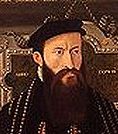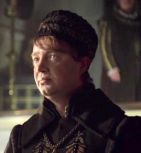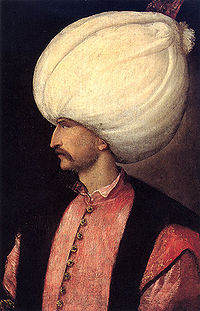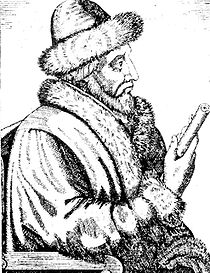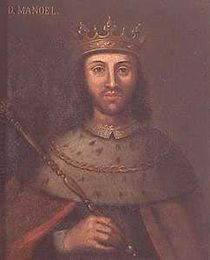Rivals & Allies of the King
Jump to navigation
Jump to search
Other Contemporary Rulers
Conflicts,Wars & Treaties between the Ruling Powers
,
| The Contemporary Rulers of Europe Click EasyEdit to update this page! (Don't see the EasyEdit button above? <a href="../#signin" target="_self">Sign in</a> or <a href="../accountnew" target="_self">Sign up</a>.) |
| The sixteenth century in Europe was a time of unprecedented change.It was the beginning of the modern era, and it saw a revolution in almost every aspect of life. The century opened with the discovery of a new continent. The renaissance in Italy was peaking and spreading north, even arriving in backwaters like England.In France, the first half of the century saw the reign of Francis I, who brought the art and culture of the Italian Renaissance to France and encouraged the new humanistic learning. His contemporaries were King Henry VIII of England and the Holy Roman Emperor Charles V, whose Hapsburg territories stretched from Hungary to Spain. All were destined to leave their mark on the times and all were rivals. The Hapsburgs in particular represented a constant threat to France, as their territories, Flanders in the north, the Imperial duchies and bishoprics in the east, and Spain in the south, almost completely surrounded its land borders. |
| France ruled by Francis I 1515 - 1547 |
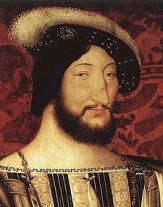 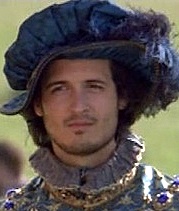 Francis I and as portrayed by Emmanuel Leconte | Personality: In many ways, Francis was similar to Henry, in his youth. "Of noble bearing, and, in spite of a very long and large nose, extremely handsome, he was a sturdy and valiant knight, affable, courteous, a brilliant talker and a facile poet. He had a sprightly wit, some delicacy of feeling, and some generous impulses which made him amiable. These brilliant qualities, however, were all on the surface. At bottom the man was frivolous, profoundly selfish, unstable, and utterly incapable of consistency or application. The ambassadors remarked his negligence, and his ministers complained of it. Hunting, tennis, jewelry and his gallantry were the chief ]preoccupations of his life." [source: Luminarium encyclopedia] |
| The Holy Roman Empire ruled by Charles V 1519 - 1556 |
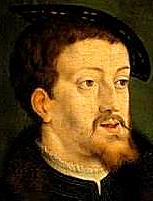 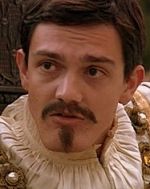 Charles V and as portrayed by Sebastian Armesto Son of Queen Katherine of Aragon's sister Juana of Castile & Philip I of Castile | Personality: Charles has been called a catholic zealot however his constant distraction with French wars meant that he was unable to pay full attention to the astonishing growth of Lutheranism in his Empire. In fact his reign was marked by extreme leniency. Spain enjoyed a long lull in the activity of her Inquisition. "Charles had an abundance of good sense, but little creative genius, and he was by nature conservative. ...Charles was undeniably plain. He confessed that he was by nature ugly, but that as artists usually painted him uglier than he was, strangers on seeing him were agreeably disappointed. The protruding lower jaw and the thin pale face were redeemed by the fine open brow and the bright speaking eyes. He was, moreover, well made, and in youth had an incomparable leg. Above all no man could doubt his dignity; Charles was every inch an emperor." [source:Luminarium encyclopedia] An English diplomat said of him:
|
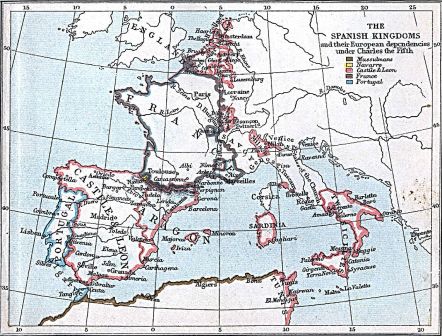 Map of Europe showing France surrounded by the Spanish kingdoms of the Holy Roman Empire and the reason for the enmity between Francis I & Charles V |
| The Schmalkaldic League from 1530 - 1547 (Protestant Confederation of Germany) |
'By early1539 a rapprochement between Charles V and Francis I, as well as the renewal by Pope Paul III of the suspended bull of excommunication against Henry, had left England isolated. In retaliation and needing to marry to secure the succession, He decided to form an anti-papal network with Duke William of Cleves, a schismatic ruler who was like himself, neither Lutheran nor Sacramentarian.'* And in 1540, Henry selected William's sister Anne of Cleves as wife for diplomatic reasons in a time of religious turmoil. William's other sister Sybille of Cleves was married to John Frederick of Saxony, one of the main Lutheran Leaders of the Schmalkaldic League *source: The Marrying of Anne of Cleves, by Retha Warnicke | In the Holy Roman Empire, which covered much of central Europe, the newly Lutheran princes clashed with their Emperor Charles V: he was the secular head of the Catholic church and they were part of a heresy. These tensions produced the Schmalkaldic League, an alliance of Lutheran princes and cities that pledged to protect each other from any religiously motivated attack; it lasted for 16 years. Headed by two leading Lutheran princes, Landgrave Philip of Hesse and Elector John Frederick of Saxony, arranged a meeting at Schmalkalden, in the December of 1530. Here, in 1531, 8 princes and 11 cities agreed to form a defensive league: if one member were attacked because of their religion, all the others would unite and support them. The decline of the League began in the early 1540's. Philip of Hesse was revealed to be a bigamist, a crime punishable by death under the Empire's legal Code of 1532. Fearing for his life, Philip sought an Imperial pardon, and when Charles agreed Philip's political strength was shattered; the League lost an important leader. The Schmalkaldic War was fought between 1546-7. Ultimately, the League was beaten easily by Charles V at the Battle of Mühlberg, where he crushed the Schmalkaldic army and captured many of its leaders. John and Philip of Hesse were imprisoned, the Emperor stripped 28 cities of their independent constitutions, and the League was finished. |
| The Vatican |
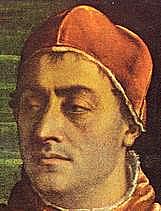  Pope Clement VII as portrayed by Ian McElhinnery Responsible for excommunicating King Henry VIII. | Pope from 1523 - 1534 Personality: He was "learned, clever, respectable and industrious, though he had little enterprise and less decision" (Armstrong, Charles V, I, 166). The whole political and religious situation was one of extreme delicacy, and it may be doubted if there was one man in ten thousand who would have succeeded by natural tact and human prudence in guiding the Bark of Peter through such tempestuous waters. Clement was certainly not such a man. He had unfortunately been brought up in all the bad traditions of Italian diplomacy, and over and above this a certain fatal irresolution of character seemed to impel him, when any decision had been arrived at, to hark back upon the course agreed on and to try to make terms with the other side. [source: Catholic Encyclopedia] |
 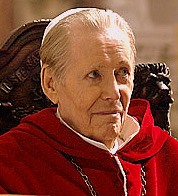 Pope Paul III as Portrayed by Peter O'Toole | Pope from 1534 - 1549 Personality: His contemporaries praise his proficiency in all the learning of the Renaissance, especially in his mastery of classical Latin and Italian...In accordance with the abuses of his time, he accumulated a number of opulent benefices, and spent his immense revenue with a generosity which won for him the praises of artists and the affection of the Roman populace. His native ability and diplomatic skill, acquired by long experience, made him tower above his colleagues in the sacred college.... Those piercing little eyes, and that peculiar attitude of one ready to bound or to shrink, tell the story of a veteran diplomat who was not to be deceived or taken off guard. His extreme caution, and the difficulty of binding him down to a definite obligation, drew from Pasquino the facetious remark that the third Paul was a "Vas dilationis." [source: Catholic Encyclopedia] |
Other Contemporary Rulers
| Scotland | Sweden | Denmark & Norway |
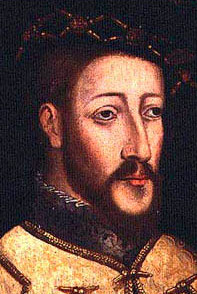 James V of Scotland 1513 - 1542 son of James IV & Margaret Tudor (King Henry VIII's sister) succeeded by his 6 day old daughter, Mary Queen of Scots 1542 - 1567 | 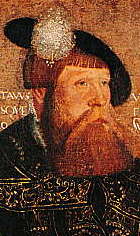 Gustav 1 of Sweden 1523 - 1560 | 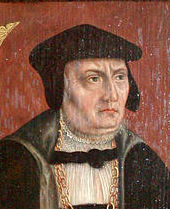 King Frederick I of Denmark & Norway, the Wends and the Goths 1523 - 1533 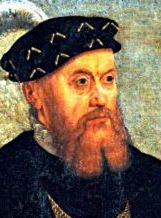 King Christian III 1533 - 1559 |
| Ottoman Empire | Russia | Portugal |
| Suleiman I the Magnificent (27 April 1494/1495/6 November 1494 – 5/6/7 September 1566), was the tenth and longest-reigning Sultan of the Ottoman Empire, from 1520 to his death in 1566 England did not have diplomatic ties with the Ottoman Empire until 1579. | Vasili III Ivanovich, was the Grand Prince of Moscow from 1505 to 1533. He was the son of Ivan III Vasiliyevich, also known as Ivan the Great England did not have diplomatic ties with the Russian Empire until 1557. | In the series, Princess Margaret Tudor marries the Portuguese king, who lives only a few days until she smothers him in his sleep. In reality the Princess was married to Louis XII, King of France and the King of Portugal was 45-year-old Manuel who was married to Queen Katherine of Aragon's sister Maria of Aragon & then married to Charles V's sister Eleanor of Habsburg. - who later married Francis I |
Conflicts,Wars & Treaties between the Ruling Powers
| Date | Event | |
| 1520 June 7th - 24th | The Field of Cloth of Gold | This meeting between Francis I & Henry VIII, which took place over three weeks nearly bankrupted the treasuries of France and England, and was useless politically. Francis and Henry signed no treaty, and a few weeks later Henry signed a treaty of alliance with the Holy Roman Emperor, Charles V. |
| 1520 July 10th | King Henry VIII meets Charles V at Gravelines | |
| 1521 August 15th | Treaty of Bruges Secret treaty between Charles V and King Henry VIII providing for a joint invasion of France before March 1523. | Did not materialise. English staged campaign (autumn 1523), and with minimal help from Charles got nowhere |
| 1522 | Treaty of Windsor Treaty between England and the Holy Roman Empire. Was to include a marriage between Princess Mary Tudor and the Emperor, Charles V. | Broken in 1525 |
| 1525 February 24th | The Battle of Pavia The Habsburg army defeats the French and King Francis I is captured by Charles V & forced to sign the Treaty of Madrid renouncing his italian claims and ceding Burgundy. | Upon his return to France, however, Francis argued that his agreement with Charles was made under duress and also claimed that the agreement was void, as his sons had still been taken hostage suggesting his word alone was not trusted, and he repudiated it. |
| 1526 | Charles marries Isabella of Portugal | This was one of the important steps Charles took in regaining his control over Spain. He had matured since the earlier revolts and he gained respect in Spain. |
| 1527 | Treaty of Westminster. Treaty between King Henry VIII of England and Francis I of France against Charles V | |
| 1527 May | Charles army mutineers due to not being paid and sacks Rome | Charles was embarrassed but powerless to stop his troops. However, he took advantage of the fact and imprisoned Pope Clement VII |
| 1529 August 3 | Treaty of Cambrai also called "Peace of the Ladies" | Peace negotiated by Louise of Savoy , mother of King Francis I & regent in his absence, and Margaret of Austria, aunt of Emperor Charles V & regent of the Netherlands confirming Spain's control over Italy. |
| 1530 July 1st | Eleanor of Habsburg (Charles V's favourite sister) marries Francis I | as part of "the Ladies' Peace" treaty. Eleanor had previously been married to the King of Portugal and before that was a bridal prospect for King Henry VIII before he married Katherine of Aragon. |
| 1536 | The Franco-Ottoman alliance, also called the Franco-Turkish alliance, was established between Francis I and the Turkish ruler of the Ottoman Empire Suleiman I. | It was called "the first nonideological diplomatic alliance of its kind between a Christian and non-Christian empire" and It did cause quite a scandal in the Christian world. |
| 1538 | Francis I signed a peace treaty with Charles V | |
| 1542 | Francis allied again with the Ottoman empire. | |
| 1543 | Charles V made an alliance with King Henry VIII | |
| 1544 | Battle of Boulogne - Charles V & Henry against Francis I | See : Timeline of the Battle of Boulogne |
